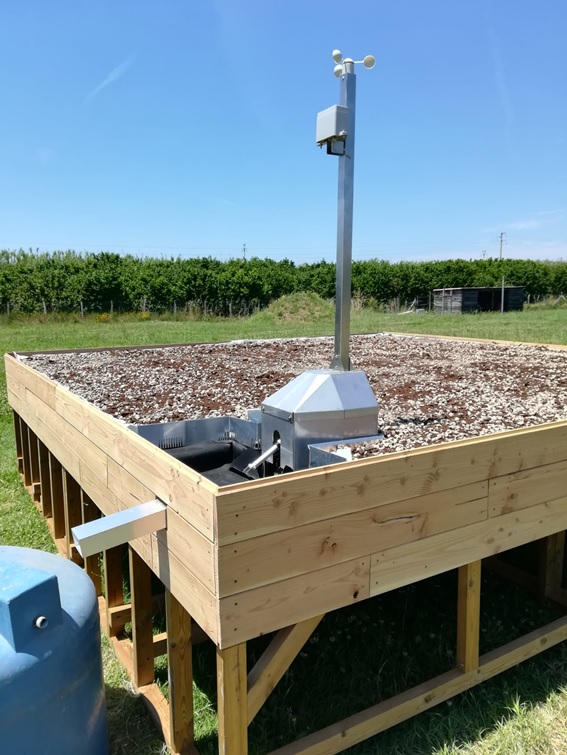Delft University of Technology, The Netherlands
This 500 m2 roof can retain 30 000 liter. The roof is planted with herbs and vegetables. This is to find out which plants are growing well on the substrate and can occasionally survive some dry days.
This 500 m2 roof can retain 30 000 liter. The roof is planted with herbs and vegetables. This is to find out which plants are growing well on the substrate and can occasionally survive some dry days.

This roof is located at a carpentry workshop. Since construction, the carpenters have had a considerably less warm workplace on summer days. 2100 liters of water can be retained on the roof and used to irrigate the plants on the roof.
In Cagliari in Sardinia it is hot and dry in July and August. Cactus are planted on the polder roof. Other vegetation does not survive the summer. Of the cactus it is interesting to find out if they can develop well on a roof garden and how much they evaporate.

The climate in Palermo, just like Cagliari, is dry and hot in the summer. On the outer ring clover and sedum were sowed. In the inner ring oregano, narrow-leaved bindweed and shrubby bindweed were sowed. The university is interested in how the substrate and the plants on the polder roof influence the water quality of the water that percolates through the substrate.

.
What is the temperature difference between a conventional roof and a polder roof?
a) within the building
b) on the building
- How much water evaporates?
- How much water is spilled?
- How can we optimally delay the water?
- Which herbs and vegetables grow well?
- How long can the vegetation survive without water?
- What is the quality of the precipitation?
- How does this changes when the water percolates through the substrate?
- What is the quality of the water in the reservoir under the green roof?
If you are interested in learning more about our research or collaborating with us, get in touch!